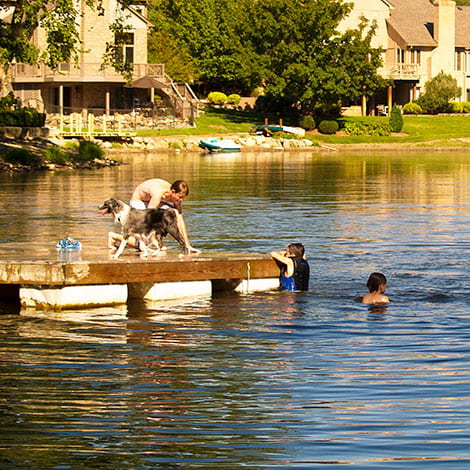Asked By: Steve of McDermott, OH
A: Yuck. In some luxe-minded circles, mud baths are all the rage. However, muck baths with their putrid odors aren't very vogue. What causes all that slimy, stinky sludge, and how can you get it under control before swimsuit season? Cleaning, aeration, and beneficial bacteria will make muck history in your swimming pond in no time.
What is Muck
Muck is a natural byproduct of the decomposition of organic debris, like dead algae and decaying plants. The foul smell is caused by waste gases released by anaerobic bacteria chowing down on this detritus, which is why your pond might smell like sewage.
Ponds become particularly mucky when they sit stagnant for long periods or get excessive leaves from nearby trees. All that organic material builds up, breaks down, and eventually decomposes.
When muck squishes between your toes, you release the trapped gases—an unpleasant sensation that will quickly remove swimming from your agenda.
How to Clean Muck From the Bottom of a Pond
If your swimming pond is slimy and stinky, you can remove the muck and its resulting odor. The cost to dredge a pond can be prohibitive, but there are simple sludge removal options that won’t break the bank. Here's a three-step solution that will help:
More Tips for Removing Sludge From a Pond
By using beneficial bacteria, adding aeration, and removing debris, you'll be well on your way to a sludge-free pond that's perfect for swimming and summer fun. If you are up to your neck in muck and don’t know where to start, contact us! Give us a call at 866-POND-HELP, and our friendly pond techs will walk you through the best solutions.
Read more about keeping your pond clean and clear in the following articles:
What is Muck and How Do You Remove Muck?
Aeration for Muck Reduction and Water Clarity
How to Reclaim Your Lakefront Shoreline
Turbidity in a Pond Explained
Last Updated: May 8, 2024

